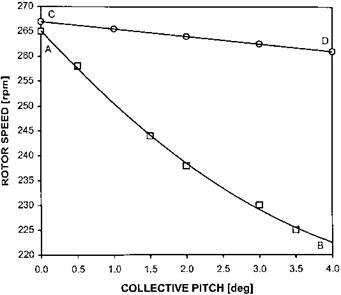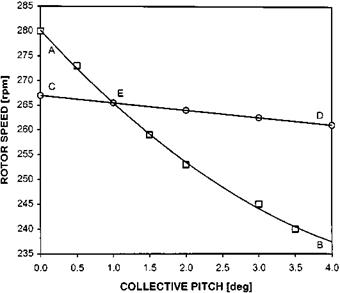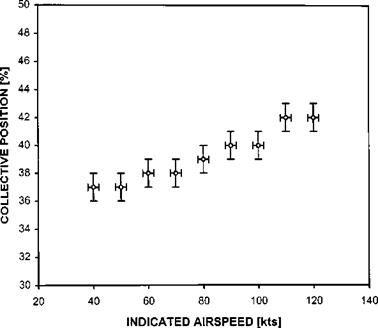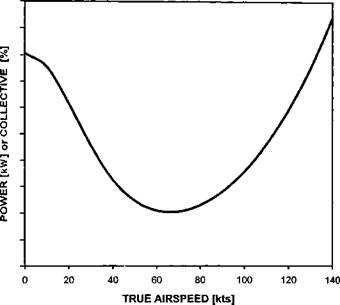Lateral static stability
The lateral static stability can also be degraded by the addition of external stores or floats. In this case the increase in side area below the mid-point of the fuselage may produce a large destabilizing contribution to the overall lateral stability. Weak positive to neutral static stability may result with consequently poor sideforce cues. If this characteristic occurs with poor directional static stability the pilot may find it very difficult to control sideslip. In addition weak lateral static stability will increase the workload required to maintain wings-level flight. Once again augmentation, this time in the form of roll rate feedback is likely to be the most cost-effective solution, although a bank angle hold may be necessary.
6.5.1.5 Control response
The control response of the helicopter will be of great concern to the pilot. If the response is poorly tuned to the role the aircraft may still have unacceptable handling qualities regardless of how well the stability deficiencies have been overcome. Generally the nature of the control response is a function of the rotor system fitted to the helicopter and only minor changes can be made via modifications to the mechanical characteristics of the cockpit controls.
6.5.2 Levels of augmentation
The term automatic flight control system covers a multitude of systems that are used to improve, or remove, the stability deficiencies described above. In addition the more sophisticated systems can improve, or tailor, the handling qualities and permit certain role manoeuvres to be flown automatically. The term AFCS will be taken to apply to all forms of stability augmentation and automatic flight path control.
Stability augmentation (or inner-loop) systems can be further sub-divided into systems that use angular rate information as their primary data source and those that rely on direct measurement of aircraft attitude. Typically rate-based systems are cheaper and simpler to design and are, therefore, found on small-to-medium sized helicopters. Attitude-based systems are often enhanced by a range of outer-loop modes, see below, and are found on larger helicopters or those aimed at single pilot IFR operation.
The autopilot, or outer-loop system, is a higher level of augmentation. As the name suggests it can be considered as an outer loop around a stability augmentation system that allows automatic control of flight path through the action of parallel actuators. Holds other than pitch and roll attitude will often be included such as heading, speed, height (radar and barometric) and vertical speed. Special modes may also be included: coupled approach, auto transition, ‘go-around’ and hover position hold.
Fly-by-wire (FBW) technology, for long the sole preserve of flight control systems for fixed wing aircraft, has flown successfully on several research rotorcraft and is being implemented on two helicopters (RAH-66 and NH-90) destined for full-scale production. As in fixed-wing systems FBW affords the helicopter FCS designer greater flexibility of design. This has been necessary to reduce pilot workload by providing a set of control laws and holds that are role suited, selectable and blended so that the most appropriate form of command and stability augmentation is available for each phase of the mission. This will enable the crew to devote more time to operating onboard sensors or weapons systems rather than piloting the aircraft. With FBW the flying controls need not be placed in the conventional positions as all piloting commands are passed through a flight control computer (FCC) by means of electrical signals. A sidestick and a small collective lever are alternatives to the conventional controls.
















